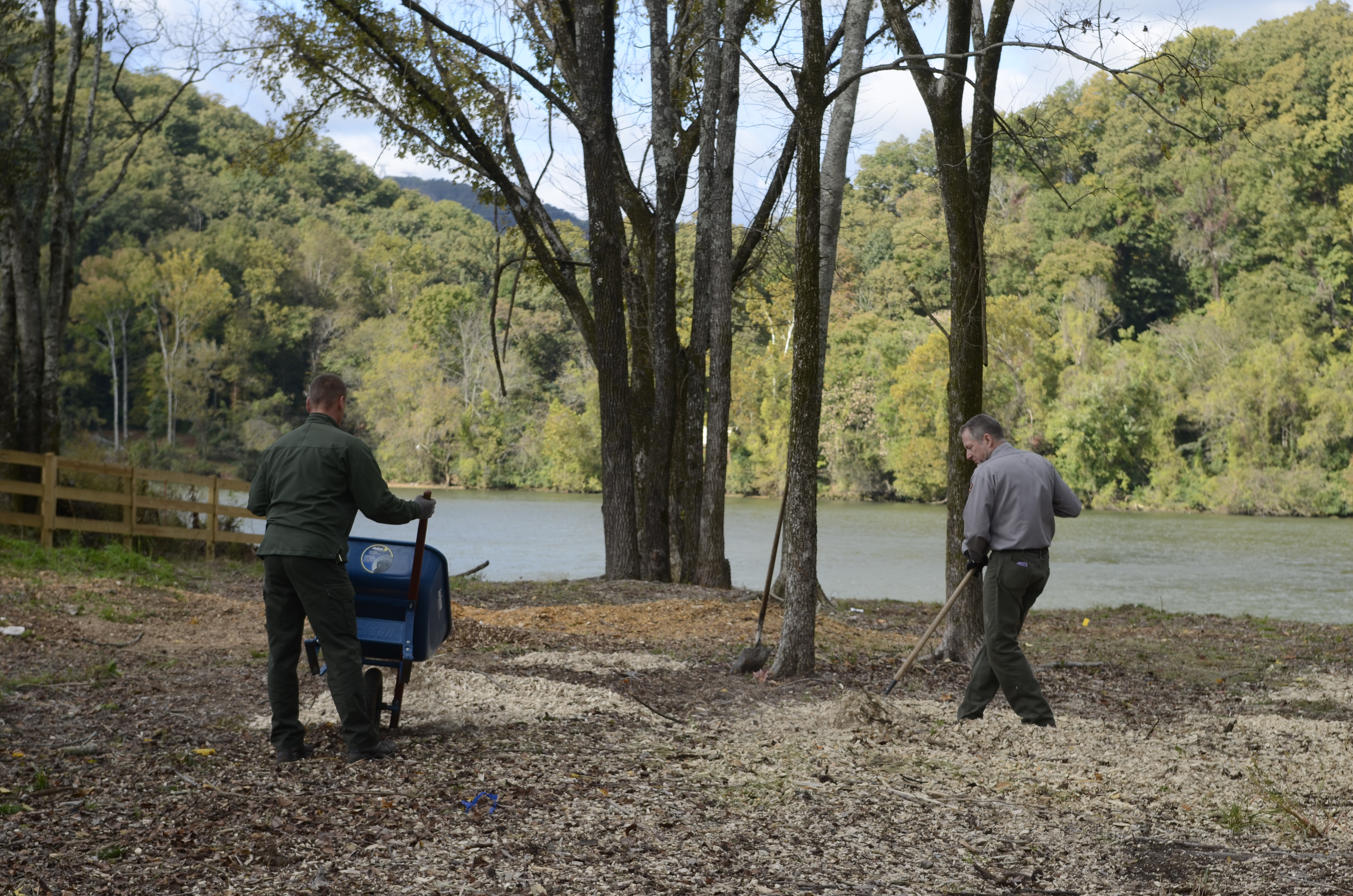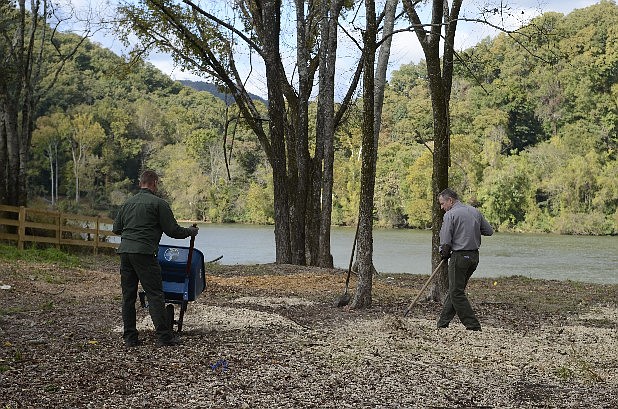IF YOU GOResidents interested in attending the Brown's Ferry Federal Road trail should go to the Friends of Moccasin Bend office by 9:15 a.m. Saturday at 175 Hamm Road. Shuttles will take visitors from there to the trail.The opening ceremony will start at 10 a.m. at the trail head. Principal Chiefs Bill John Baker and Mitchell Hicks will speak, along with park service historians and others.The trail will be open to residents, but those who wish to take ranger-guided tours will have that opportunity at 11 a.m., 1 and 3 p.m. Saturday, then at noon and 2 p.m. Sunday.BEYOND THE TRAILPrincipal Chief Baker will speak at 7 p.m. Monday at the Tennessee Aquarium auditorium for a second installment of the Friends of Moccasin Bend's lecture series.The final lecture will occur at the same time and place on Nov. 18, lead by Military Park Historian Jim Ogden and Archeologist Lawrence Alexander, who helped uncover the Brown's Ferry trail.All events are free and open to the public.
 National Park Service workers Dino Selimagic and Tim Ferguson spread wood chips as they make preparations for the new section of the Moccasin Bend National Archaeological District that will have opening ceremonies this Saturday. Planners used GPS to find the route of the old Federal Road, and several sections of the new trail follow the original road that led the Cherokee to Brown's Ferry and the start of the Trail of Tears.
National Park Service workers Dino Selimagic and Tim Ferguson spread wood chips as they make preparations for the new section of the Moccasin Bend National Archaeological District that will have opening ceremonies this Saturday. Planners used GPS to find the route of the old Federal Road, and several sections of the new trail follow the original road that led the Cherokee to Brown's Ferry and the start of the Trail of Tears.Time marches on, but its path is often lost to history. That's not the case at Moccasin Bend National Archaeological District, where an historic trail has been rediscovered.
After 10 years of research, bushwhacking, digging, more research and more bushwhacking, Shelley Andrews, executive director of the Friends of Moccasin Bend, said the Brown's Ferry Federal Road Trail will open Saturday, aligned with the 175th anniversary of the Trail of Tears and the 150th of the Civil War.
The road is an important piece of Cherokee and Chattanooga history. Running from modern day Moccasin Bend Road to the Brown's Ferry landing, it served as part of the Trail of Tears, the path of forced exodus for American Indians in the Southeast that forever changed those peoples' destinies.
And 25 years later, it became part of the "cracker line," which served as a critical supply chain for about 30,000 Union soldiers in September 1863. Those fighting men took Chattanooga from Confederate forces.
Two weeks of work lost because of the partial federal government shutdown couldn't stop the unveiling of the trail, and the event will bring some very important people from the Cherokee Nation, Andrews said.
Cherokee Nation Principal Chief Bill John Baker and Mitchell Hicks, principal chief of the Eastern Band of Cherokee, and other notable Native American figures will arrive today to attend the opening at 10 a.m. Saturday. Baker will speak Monday night as part of the Moccasin Bend Lecture Series.
"We've got a lot of important people who are coming because this is an important event for the Cherokee people," Andrews said.
The Friends of Moccasin Bend had searched for the road since 2003 after acquiring the 98-acre tract of land, which once was part of the 640-acre John Brown Cherokee Reservation.
Cathy Cook, superintendent of the U.S. National Park Service Chickamauga & Chattanooga National Military Park, said finding the old road has taken a lot of hard work.
"It was a corridor that was overgrown over the years and forgotten, but we knew from old maps, letters, diaries, histories about the road. And there were the geographic places that were still there like Brown's Ferry to identify the road," she said. "There was always an interest in uncovering the old road and providing interpreters to provide the story, but it was a formidable task."
Rangers used modern technology, like light detection and ranging devices to find the old road, then the Park Service hired an archaeologist to do some exploratory digging. Once the road was found, it was a matter of trail clearing and placing signs.
"One of the things I love about it is once you are in the middle of that trail, you feel as though you are out in a forested area away from the industrial aspect of Moccasin Bend. We certainly hope that people come out and find a little bit of a refuge out on Moccasin Bend as well as learn about the rich history of the corridor itself," Cook said.
Cook said the trail could never have been found, or the land acquired, without a grant from the Lyndhurst Foundation.
Contact staff writer Louie Brogdon atlbrogdon@timesfreepress.com or at 423-757-6481.
